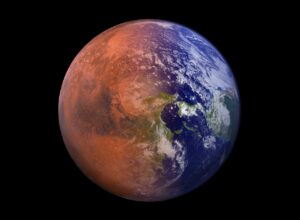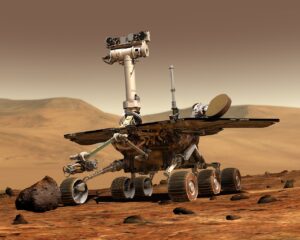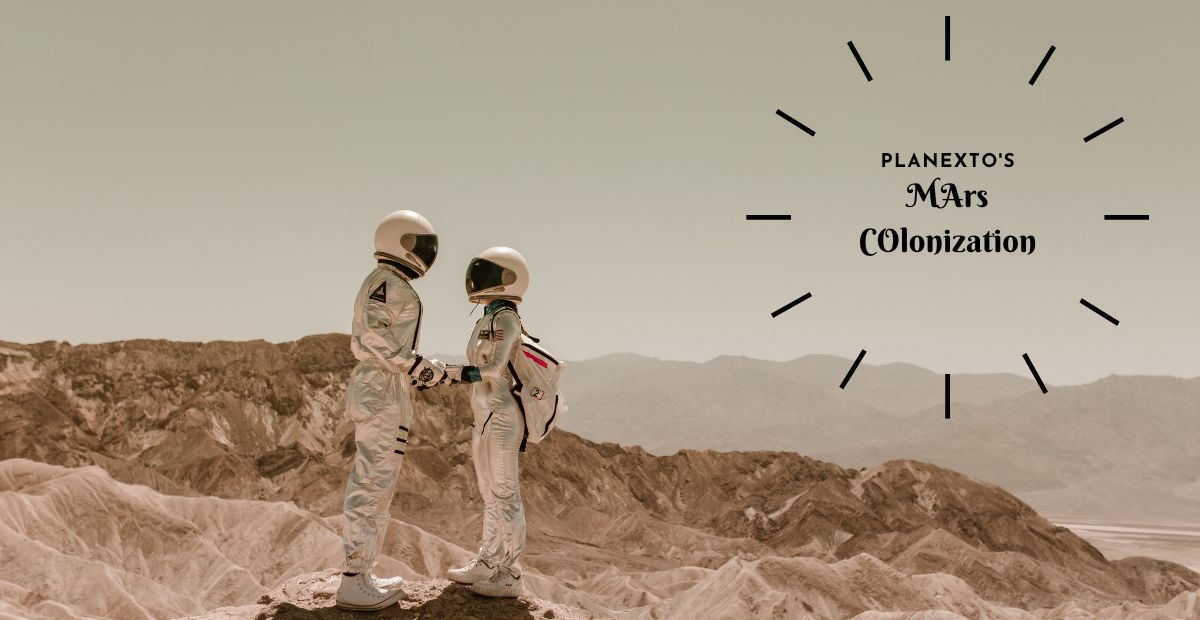Introduction
In the vast expanse of the cosmos, the dream of Mars colonization beckons as humanity’s next great odyssey. This hypothetical mission envisions establishing a permanent human presence on the enigmatic red planet, Mars. As we gaze at the night sky, several organizations, including NASA and private enterprises like SpaceX, are actively working toward this goal. Let’s embark on a journey to unravel the key aspects of Mars colonization
Why we need Mars colonization
Mars colonization represents a grand leap for humankind. It promises to extend our presence beyond Earth, safeguarding our species’ future. Scientific exploration of Mars opens doors to unraveling its geology, climate history, and the potential for life. Technological advancements spurred by the challenges of colonization offer broader applications on Earth. Mars harbors valuable resources, including water ice and minerals, which can serve as the lifeblood of our future endeavors. The drive to colonize fuels innovation, pushing the boundaries of technology and inspiring solutions to complex problems. Becoming a multi-planetary species not only reduces the risks of extinction but also deepens our understanding of our place in the cosmos.

The Challenges
The path to Mars colonization is rife with daunting challenges. Mars presents a harsh environment, characterized by extreme temperatures, a thin atmosphere with scant oxygen, high radiation levels, lack of liquid water, and a seemingly barren landscape. Surmounting these obstacles demands the pinnacle of technology and infrastructure.
Habitats and Sustainability
Sustainable colonization hinges on habitat and resource management. Protective structures are vital to shield inhabitants from Mars’ unforgiving climate, radiation, and the rarefied atmosphere. Life support systems must generate breathable air, water, and food through advanced recycling and cultivation technologies. Leveraging local resources, such as water ice, emerges as a linchpin of sustainability, reducing dependence on Earth for supplies. Self-sufficiency and resource utilization stand as central goals to establish a lasting presence on Mars.
The Missions
A constellation of missions has illuminated the path toward Mars colonization. The Viking program (Viking 1 and Viking 2) set the stage, landing on Mars in 1975 to search for signs of life and assess human exploration potential. Mars rovers, from Sojourner to Curiosity, have unveiled the secrets of Mars’ geology, climate, and resources. NASA’s InSight mission, launched in 2018, peeks into Mars’ interior and seismic activity. The collaborative ESA-Roscosmos ExoMars program brings the Trace Gas Orbiter and the forthcoming Rosalind Franklin rover, focusing on Martian environment and life search. These missions propel our knowledge of Mars and lay the foundation for future colonization planning.

Alien Life on Mars
The quest to discover alien life on Mars fuels our scientific curiosity. Mars possessed a more habitable past, with hints of water and a thicker atmosphere. Previous missions probed for microbial life but left questions unanswered. A Mars Sample Return mission is slated to deliver Martian samples for analysis. While scientists speculate that life, if it exists, might reside in subsurface environments, Earth’s extremophiles broaden our horizons on where life can flourish. The hunt for alien life on Mars persists, with ongoing research and upcoming missions, such as Perseverance and the Rosalind Franklin rover, continuing to explore for signs of microbial life or remnants of the past.

Conclusion
It’s vital to understand that while progress is being made in Mars colonization efforts, significant technical, financial, and logistical challenges still loom. The timeline for establishing a permanent human presence on Mars remains uncertain, but our commitment to space exploration endures, ever pushing the boundaries of our capabilities. Mars, the red jewel of our night sky, awaits the day when the dream of colonization becomes a resounding reality, and humanity takes its next giant leap among the stars.
FAQs
Q: How realistic is the idea of colonizing Mars?
A: Colonizing Mars is a challenging but plausible goal, backed by significant advancements in technology and ongoing missions.
Q: What are the main obstacles to Mars colonization?
A: Extreme environmental conditions, resource scarcity, and the need for sustainable technologies pose significant challenges.
Q: How does Mars colonization impact Earth’s economy?
A: While still speculative, Mars colonization could open new economic opportunities, fostering technological innovation and job creation.
Q: Are there ethical concerns surrounding Mars colonization?
A: Yes, ethical considerations include potential harm to the Martian environment and the impact on indigenous Martian microbial life.
Q: How can individuals contribute to Mars colonization efforts?
A: Supporting space exploration initiatives, pursuing STEM education, and advocating for responsible space exploration are ways individuals can contribute.








